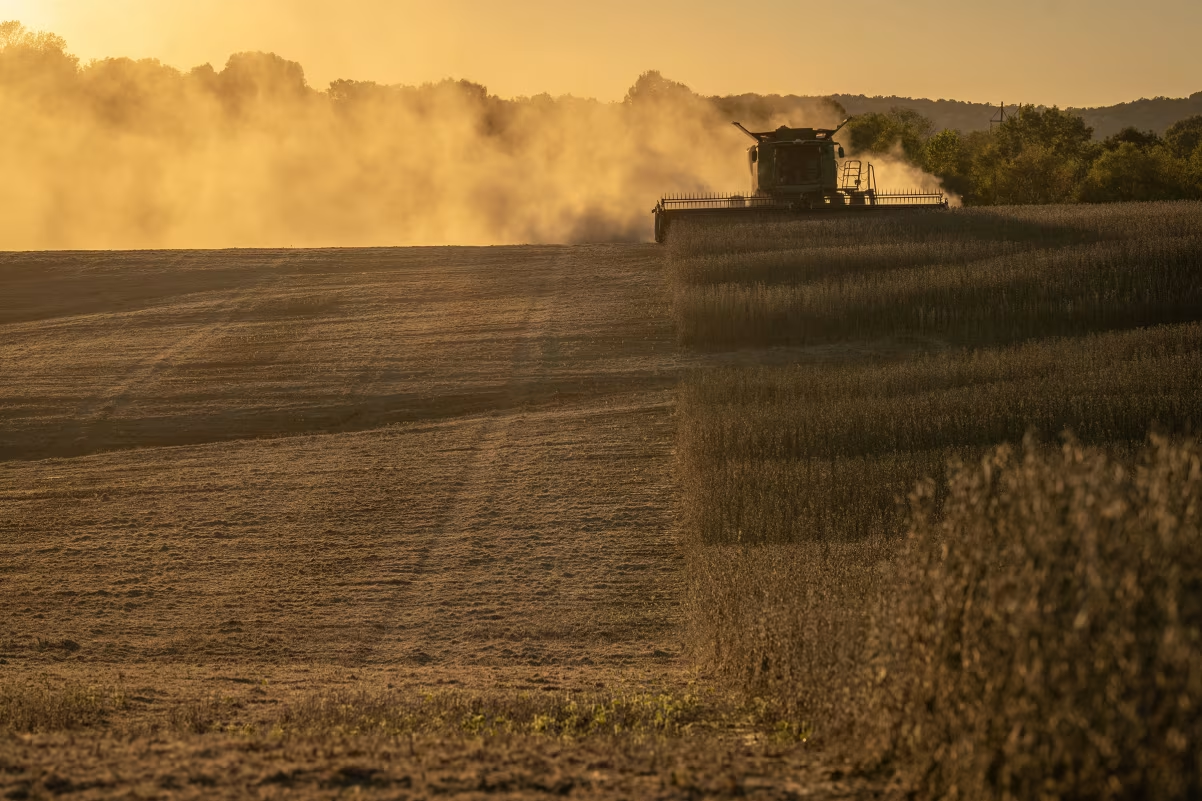The White House is facing growing pressure to deliver a long-promised bailout for American farmers caught in the crossfire of the U.S.–China trade war. As President Trump prepares for a decisive meeting with Chinese President Xi Jinping, tensions are mounting across the agricultural belt, where producers are grappling with billions in losses from tariffs and stalled exports.
Secretary of Agriculture Brooke Rollins has led efforts to unlock emergency relief through a Depression-era fund, freeing more than $3 billion in aid for crop insurance, disaster assistance, and farm programs. Yet, the question remains whether Washington will approve the $10 billion to $14 billion package that has been under debate for months — or whether the fate of U.S. farmers will hinge on a breakthrough in the Trump-Xi negotiations.
Farmers Caught Between Trade Promises and Political Deadlock
For months, Rollins and Treasury Secretary Scott Bessent have been at the center of White House debates over how to aid struggling farmers. The U.S. Department of Agriculture (USDA) reopened its 2,100 county offices using redirected funds to resume payments to producers after the prolonged government shutdown. But officials admit that the shutdown delayed broader plans for a relief package and limited communication between Congress and the administration.
American farmers, particularly soybean growers, have been hit hardest. China once purchased nearly half of all U.S. soybean exports, valued at over $24 billion, according to USDA data. Since Beijing’s retaliatory tariffs began, those exports have plummeted, leaving warehouses filled with unsold crops. “We had to find a legal way to get funds moving again,” Rollins said, emphasizing her agency’s efforts to prevent further bankruptcies.
Meanwhile, frustration has spread across farming states. Lawmakers from Iowa, North Dakota, and Illinois have pressed the administration to prioritize farmers in ongoing trade talks. “If Trump pulls off a major trade deal with China that restores soybean sales, all will be forgiven,” said Sen. Kevin Cramer of North Dakota.
The Trade War’s Ripple Effect on Rural America
The tariff standoff has affected far more than soybeans. Corn, wheat, and beef producers have also suffered under volatile prices and lost access to global markets. Experts estimate that growers of major commodity crops could face up to $45 billion in combined losses this year due to lower export demand, rising costs, and surplus production.
Analysts from the International Food Policy Research Institute warn that even with relief packages, farmers may not recover fully. “It’s very hard to roll back bailouts once they begin,” said Joe Glauber, a former USDA economist. “But without them, many rural economies will collapse.”
Rollins has advocated using revenues from Trump’s tariffs — roughly $80 billion collected over two years — to fund agricultural aid through the Commodity Credit Corporation, a New Deal-era program designed to stabilize farm income. However, with federal staff furloughed and Congress divided, progress remains slow.
Adding to the frustration, the administration’s financial support for Argentina’s agriculture industry, estimated at $20 billion, has angered U.S. farmers who see it as money that could have helped them weather the trade war. Dave Murphy, founder of United We Eat, said, “Farmers who’ve supported Trump feel abandoned. They’re watching foreign competitors benefit while they drown in unsold grain.”
Tariffs, Politics, and the Future of the U.S. Farm Economy
As Trump and Xi prepare for their bilateral meeting, optimism is cautiously returning to agricultural markets. Treasury Secretary Bessent recently announced a framework agreement that could prompt China to resume “substantial” soybean purchases, signaling that trade channels may reopen soon. On social media, Rollins confirmed China’s first soybean purchase since May, suggesting the impasse could finally be easing.
Yet uncertainty lingers. With the Federal Reserve lowering interest rates to support borrowing, and the broader economy showing signs of strain, many question whether relief efforts can outpace economic headwinds. Farm groups argue that aid is only a temporary fix. “We don’t want handouts — we want markets,” said Bob Worth, a Minnesota farmer and former president of the state’s soybean association.
Corn production has also surged to a record 16.8 billion bushels, creating an oversupply that is driving prices downward. “That’s a mountain of corn with no buyers,” said Lesly Weber McNitt of the National Corn Growers Association. “Without export access, those crops will sit and rot.”
As trade tensions and government gridlock continue, the administration faces a critical decision: pursue an immediate bailout or secure a long-term deal that restores American agriculture’s competitiveness. For now, millions of farmers are watching the Trump-Xi summit — and hoping that the next handshake brings more than promises.



